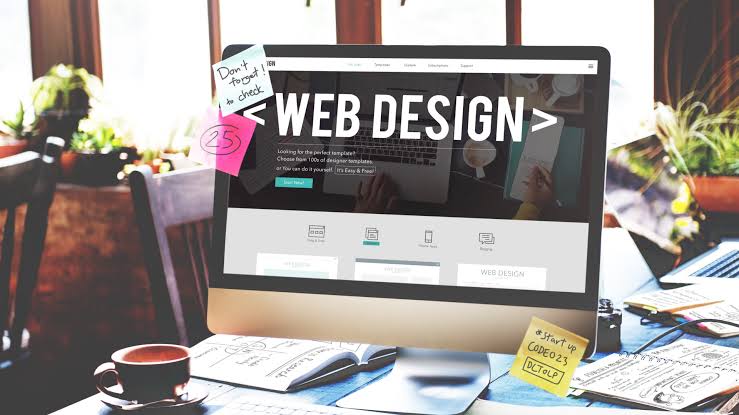Creation of sketches and prototypes of web design
Before starting the creative process of designing the online web store or web page, the web designer creates a sketch showing the functionalities and basic architecture of the web. This helps the customer to see how their requirements have been interpreted.
Usually, this consists of geometric shapes and grayscale text blocks. Photoshop allows you to create this type of sketch very quickly, as well as being able to add icons and rely on the pencil tool.
Development “to the millimeter” of web designs
Photoshop works with raster graphics. This means that it works with exact measurements down to the pixel and allows you to edit each pixel individually if that becomes necessary.
This capability of Photoshop is instrumental in web design, and it greatly facilitates the post-work of the web page programmer. A slightly misplaced line or an element of the wrong size can cause the web page to lose the user’s attention.
Gridlines and other tools in Photoshop allow you to make sure there aren’t any pixels left over. Furthermore, it will enable you to work efficiently at the pixel level without spending too much time looking for every irregularity.
Layered design for layout designers
Front-End web developers ensure that the web interacts correctly with the user and that everything looks according to the design, using HTML, CSS, and JavaScript tools.
These professionals need to receive a guide from the web designer to carry out their work and then convert it into HTML code. One of the preferred methods for developers is a layered Photoshop file.
PSD files can contain an unlimited number of layers. This helps organize the workflow and gives quick access to measured elements at the pixel level.
Typography and text font tests
Typography plays a crucial role in web page design, as the text on a web page must be readable on any screen and must fit within the rest of the design. Also, the text font should help convey the personality of the web page.
To achieve this, web designers use a variety of typographic adjustments and variations, and Photoshop is one of the best tools for tweaking and refining every detail of typography in a web page design.
Photoshop allows you to modify typographic properties such as weight, size, spacing, lines, etc. It also allows you to add effects like shadows and 3D.
CSS can carry out all these modifications on its own, but web designers need to experiment with typography beforehand and have visible results.
Adjustment and manipulation of web images
The origin of Photoshop is in the manipulation of images. It has a variety of powerful tools for this task.
This is a skill that does not go unnoticed in web page design. Web pages have images, and these should look their best. This is especially so in the case of a photo of a product for sale, and it is necessary to follow a marketing strategy in web design.
Doing your web page layout in Photoshop allows you to adjust an image with more flexibility than any other program without leaving the web design environment. Photoshop has tools such as detailed color correction, size and perspective adjustment, retouch brushes, etc.
Optimizing images for the web
Images on web pages need a balance between size and quality. An image that is too heavy will make the web page load more slowly, but a poor quality image can negatively affect the user experience.
A slow web page can cause a user to leave the site and go to the competition, and a shallow resolution image does not inspire confidence. It is crucial that the designer can always choose the right image type and control the compression parameters.
Many applications are capable of compressing images for the web, but none give you as much control and fidelity as Photoshop. Not only does it allow you to make many adjustments, but it also allows you to compress images efficiently and in batches.
Design of web elements
Photoshop is an excellent tool for creating any web element. Be it banners, sliders, buttons, graphics, covers… Photoshop can handle them all.
Photoshop has always been used in print design, so, naturally, it would adapt to this type of design for any web page.
For an expert, Photoshop is simply the fastest way to create elements. It gives the designer a lot of freedom and flexibility and makes it easy to keep all elements within the same visual style.
Advertising and banner design
Banners are one of the first elements that attract the attention of users. For that reason, they must be eye-catching enough and communicate what the web page is about.
Photoshop is a perfect tool for designing banners. First, it has many graphics creation and manipulation tools.
Second, since Photoshop is especially good at handling photos, it’s easy to incorporate them into your web design. You will be able to take advantage of its color correction and shape control tools at the pixel level.
